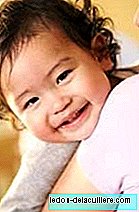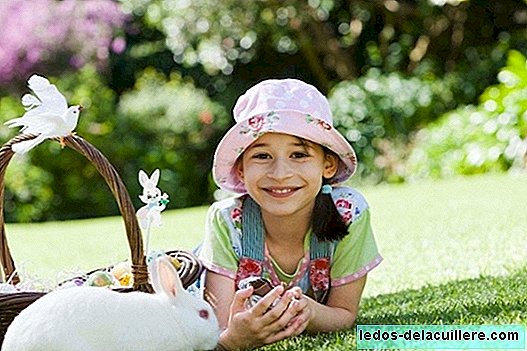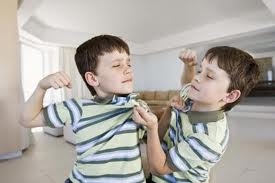I show you, on this occasion, images of another famous psychological experiment that shows that children learn to be violent from adults and if we are violent and aggressive we teach our son to be.
Its about experiment with the Bobo doll of Albert Bandura, in which demonstrates that by showing the child violent behavior, it can be made violent the same.
The Bobo doll experiment
Bandura is a Ukrainian-Canadian behavioral trend psychologist, a professor at Stanford University, and one of the most famous and cited psychologists of all time. His work has focused on social learning, social-cognitive theory and personality psychology. He is also the creator of the self-efficacy category.
But perhaps what he is best known for is this experiment on violence and the way children learn it: the Bobo doll experiment.
Bandura wanted to demonstrate his theories about the acquisition of social behaviors such as violence or aggressiveness. He proposed that aggressive patterns occur from and in childhood because of the imitation that children do of what their models do (their parents, siblings, classmates, teachers or in the media).
He used the Bobo doll for his experiment, an air-filled doll that recovers the vertical position when it is hit. Bobo has the face of a clown.
He took a group of preschoolers and divided them into three subgroups. The first saw an adult hit the doll, the second the adult without assaulting the doll and playing with other things and the third saw nothing, serving as a control group.
Bandura's hypotheses
Bandura raised his hypotheses: children who had seen the attacks would attack the doll, those who watched peaceful games would not attack him, and would even be more peaceful than the control group (in this he did not succeed, both groups were equally peaceful). He also thought that boys would be more violent and that adult sex would influence the same-sex children to copy their behavior.
Result: children learn violence from adults
He succeeded in almost everything. Those who had seen the aggressive model imitated it, both verbally and physically, with verbal aggressions being the most likely to be copied. That is, if we use insults and verbal abuse, children will act that way with others. Also, if we expose them to violence they will copy and reproduce it.
It was also evident that children copied adults of the same sex in greater proportion and that, in general, aggressive and violent behaviors were more common in boys.
Children learn violence by imitation
It should be noted that these behaviors were produced by imitation, there were no prizes or punishments, so pleasing to behaviorism, that they modified the children's behavior. The children simply learned from the adult models "appropriate" behaviors.
It is not necessary to use behavioral techniques in raising and educating children (even if they serve to manipulate them) if adults are good role models, and do not teach children violence or allow them to be exposed to it. We can clarify that very young children may not know how to channel or express their negative emotions, but there is the adult to really educate with example and empathy, while taking great care to find out if the child receives violent models of the environment.
Likewise, it should be noted that children are not only influenced by their parents, even if the family environment is the most important. Emotional blackmail is another form of violence that children experience and that we should not forget either.
Also, if we believe that our children deserve not to learn to be violent, we must demand to put the means so that our children do not learn violence from television, other children with aggressive behavior, school, teachers or extended family members who can follow resorting to humiliation, shouting, insults, blackmail or whipping to raise or educate.
Demonstrated: violence is learned
He Bandura's Bobo doll experiment show that children learn to be violent from adults and its surroundings. If we do not expose children to violence, we are not verbally, emotionally or physically aggressive with them, children will not be aggressive.
The responsibility for misbehavior is ours and it is clear that the behaviors of parents in the family environment or the social and school environment will be reflected in children's behavior.
In addition, we know that violence affects children's brains, that hitting them can cause mental disorders and that makes them aggressive.
Adults and the environment make children violent. Change adults, don't punish children with behavioral techniques. What children need is to be respected and live in a peaceful environment, not to be harmed by something that adults have taught them to do.












